'Don't wash them too regularly': One pair of jeans is all we need – here's why
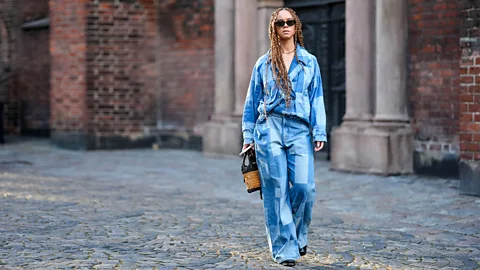 Getty Images
Getty ImagesFrom skinny to barrel and ultra-high to low-slung, jeans trends are ever changing – so how can we choose the perfect pair for us, and maintain them properly?
Few items of clothing are both as iconic and ubiquitous as a pair of jeans. With era-defining silhouettes that capture cultural moments in time, jeans are a wardrobe staple. But they're also one of fashion's most polluting categories, prone to high trend cycles and – as a result – hanging in our wardrobes unworn.
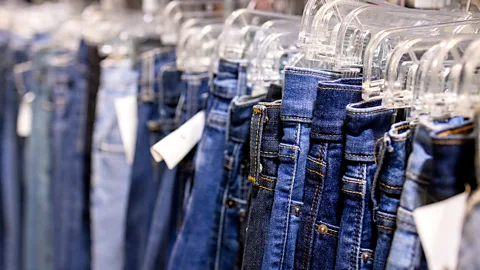 Getty Images
Getty ImagesTake this season's trends. Last year, Vogue reported that skinny jeans were making a comeback, only to call it a fleeting moment 12 months later, and now they’re back again – with the Princess of Wales as poster girl. "Slim" silhouettes are in, too, alongside belted and baggy, and – the shape of the season – barrel-leg jeans: a fitted waist that leads into a slightly voluminous leg and then tapers at the ankle. With as many fits and trends as there are body shapes and tastes, how do we invest in the perfect pair?
Personal stylist Alexandra Fullerton says that the barrel-leg silhouette works with most body shapes. "They are pleasingly loose across the legs and sit around the true waist, therefore they should have a lasting place in one's wardrobe," she tells the BBC. "They are just a baby step away from the boyfriend jean, which is now a perma-trend."
But Fullerton stresses that buying a pair of jeans should be a marathon, not a sprint, and advises her clients to build a shortlist of styles based on research. What washes do you like? Which brands do you ire? Who in the public eye has a similar body shape that you can take tips from?
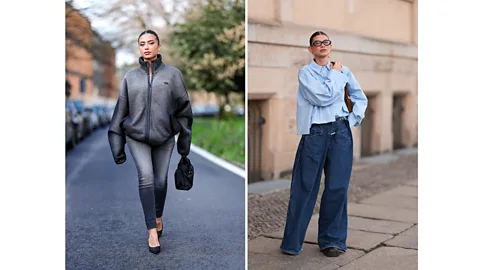 Getty Images
Getty Images"Putting in some work – that's a couple of hours in a real-life store with a well-lit fitting room and ideally a friend – will ensure the best purchase," says Fullerton. "Department stores with dedicated denim shops are the best place to start. Whatever your budget, jeans should be an investment so shop with longevity, rather than trends, in mind."
Fullerton cautions that extremes – skinny and super-wide or ultra-high and low-rises – are more prone to cycling in and out of fashion. "Better to choose a less severe silhouette that will outlast any fad, like a straight leg or modestly wide jean with a mid-to-high rise which will be classic for years ahead," she advises. "Mid-blue is always the best option for washes."
No jean has stood the test of time quite like the Levi's 501. Patented in 1873 by Levi Strauss and Jacob David in the US, it was originally created as durable, hard-wearing 100% cotton overalls for miners and farmers. But in the early 1950s, blue jeans came to signify youth rebellion, first with Marlon Brando wearing Levi 501s in The Wild One, followed by James Dean in Lee Rider 101s in Rebel Without a Cause. And who can forget Susan Sarandon and Geena Davis denim-clad in high-waisted jeans for Thelma & Louise in 1991.
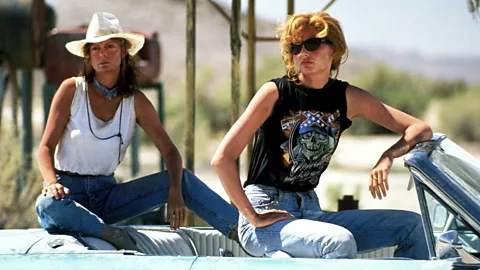 Getty Images
Getty Images"When Japanese selvedge denim replaced the ultra-baggy, hip-hop fits of the mid-to-late-90s, and then Levi's launched its Red collection of twisted, ergonomic jeans, the denim landscape changed forever," says denim designer, lecturer and historian Mohsin Sajid. "From then, denim became more elevated, appearing on catwalks and in designer brands' collections. I was working at Pringle at the time and they asked me to design a selvedge jean."
The perfect pair of jeans
Today, jeans are firmly part of the fashion mainstream; it's difficult to find a clothing brand that doesn't sell them within their collections. And most jeans now contain some synthetic stretch within the cotton mix – normally elastane, which is derived from fossil fuels and sags over time, making them less durable.
As a result, some of the shine has come off the iconic tro and its Hollywood heyday. The UN estimates that a single pair of jeans requires 1kg of cotton, which in turn, needs about 7,500–10,000 litres of water to grow – the equivalent of 10 years' worth of drinking water for one person. As an industry, fashion produces 20% of all waste water, and the denim chemical dyeing process can be harmful to both workers and the environment.
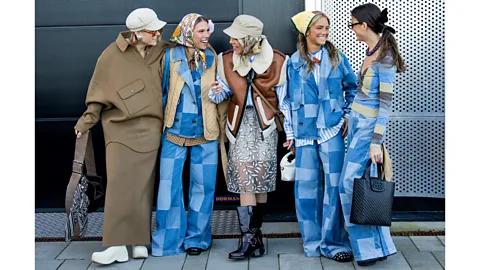 Getty Images
Getty Images"There's a reason Levi's 501 has transcended time; they're made from 100% cotton, with natural stretch," explains Professor Dilys Williams, Director of the Centre for Sustainable Fashion at London College of Fashion, UAL. "But we've become less used to wearing clothes without synthetic stretch because it's sold as more comfortable. So, it's partly about training ourselves – do we need that synthetic stretch? Or could we wear a jean in, and wait for it to shape to our bodies":[]}
